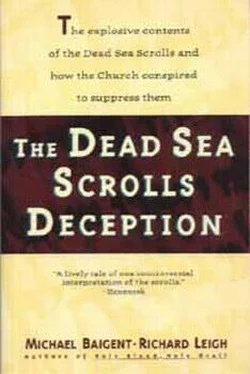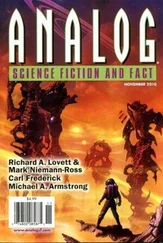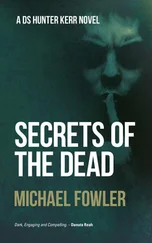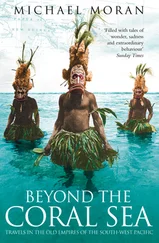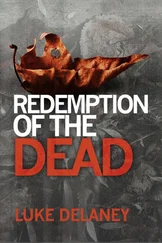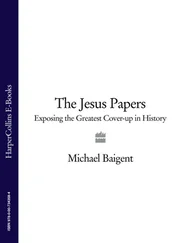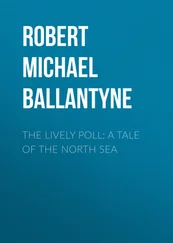The Modernists were originally intended to deploy the rigour and precision of Germanic methodology not to challenge scripture, but to support it. A generation of clerical scholars was painstakingly trained and groomed to provide the Church with a kind of academic strike force, a corps specifically formed to defend the literal truth of scripture with all the heavy ordnance of the most up-to-date critical scholarship. To Rome’s chagrin and mortification, however, the programme backfired. The more it sought to arm younger clerics with the requisite tools for combat in the modern polemical arena, the more those same clerics began to desert the cause for which they had been recruited. Critical scrutiny of the Bible revealed a multitude of inconsistencies, discrepancies and implications that were positively inimical to Roman dogma. The Modernists themselves quickly began to question and subvert what they were supposed to be defending.
Thus, for example, Alfred Loisy, one of the most prominent and prestigious Modernists, wondered publicly how, in the light of recent biblical history and archaeology, many of the Church’s doctrines could still be justified. ‘Jesus proclaimed the coming of the Kingdom’, Loisy declared, ‘but what came was the Church.’ 11Loisy argued that many points of dogma had crystallised as historically conditioned reactions to specific events, at specific places and times. In consequence, they were not to be regarded as fixed and immutable truths, but as — at best — symbols. According to Loisy, such basic tenets of Christian teaching as the Virgin Birth and Jesus’ divinity were no longer tenable.
Rome, in trying to play Frankenstein, had created a monster in her own laboratory. In 1902, shortly before his death, Pope Leo XIII created the Pontifical Biblical Commission, to supervise and monitor the work of Catholic scriptural scholarship. Later that year, Leo’s successor, Pius X, placed Loisy’s works on the Inquisition’s Index of forbidden books. In 1904, the new Pope issued two encyclicals opposing all scholarship which questioned the origins and early history of Christianity. All Catholic teachers suspected of ‘Modernist tendencies’ were summarily dismissed from their posts.
The Modernists, of course, comprising the best-educated, most erudite and articulate enclave in the Church, did not hesitate to fight back. They were supported by prominent thinkers, by distinguished cultural and literary figures. In Italy, one such was Antonio Fogazzaro. In 1896, Fogazzaro had become a senator. He was also regarded as ‘the leading Catholic layman of his day’ and, by his contemporaries at least, as the greatest novelist Italy had produced since Manzoni. In The Saint, published in 1905, Fogazzaro wrote: ‘The Catholic Church, calling herself the fountain of truth, today opposes the search after truth when her foundations, the sacred books, the formulae of her dogmas, her alleged infallibility, become objects of research. To us, this signifies that she no longer has faith in herself.’ 12
Fogazzaro’s work, needless to say, was itself promptly placed on the Index. And the Church’s campaign against the movement it had fostered and nurtured proceeded to intensify. In July 1907, the Holy Office published a decree officially condemning Modernist attempts to question Church doctrine, papal authority and the historical veracity of biblical texts. Less than two months later, in September, Modernism was effectively declared to be a heresy and the entire movement was formally banned. The number of books on the Index suddenly and dramatically increased. A new, much more stringent censorship was instituted. Clerical commissars monitored teaching with a doctrinal rigidity unknown since the Middle Ages. At last, in 1910, a decree was issued requiring all Catholics involved in teaching or preaching to take an oath renouncing ‘all the errors of Modernism’. A number of Modernist writers were excommunicated. Students at seminaries and theological colleges were even forbidden to read newspapers.
In the 1880s, however, all of this still lay in the future. Among the young Modernist clerics of the 1880s, there was a naive credulity and optimism, a fervent conviction that methodical historical and archaeological research would confirm, rather than contradict, the literal truth of scripture. The Ecole Biblique et Archeologique Franchise de Jerusalem — which subsequently came to dominate Dead Sea Scroll scholarship — was rooted in the first generation of Modernism, before the Church realised how close it had come to subverting itself. It originated in 1882, when a French Dominican monk on pilgrimage in Jerusalem resolved to establish a Dominican house there, consisting of a church and a monastery. He chose a site on the Nablus Road, where excavations had revealed the remains of an earlier church. According to tradition, it was precisely here that St Stephen, supposedly the first Christian martyr, had been stoned to death.
Rome not only approved the idea, but embellished and expanded it. Pope Leo XIII suggested that a biblical school also be established. This school was founded in 1890 by Father Albert Lagrange and opened in 1892, with living quarters for fifteen resident students. The installation was one of a number of institutions created at the time, to equip Catholic scholars with the academic expertise necessary to defend their faith against the threat posed by developments in historical and archaeological research.
Father Lagrange had been born in 1855. After studying law, he had gained his doctorate in 1878, then entered the seminary of St Sulpice, the centre of Modernist studies at the time. In 1879, he had become a Dominican. On 6 October 1880, however, under the Third French Republic, all religious orders were banished from France. The 25-year-old Lagrange had accordingly gone to Salamanca, in Spain, where he studied Hebrew and taught Church history and philosophy. It was at Salamanca that he was ordained a priest, on St Dagobert’s Day (23 December), 1883. In 1888, he was sent to the University of Vienna to study Oriental languages. Two years later, on 10 March 1890, at the age of thirty-five, he arrived at the fledgling Dominican house of St Stephen in Jerusalem, and there, on 15 November, established a biblical school. The school was called initially the ‘Ecole Practique d’Etudes Bibliques’. Lagrange created for it its own journal, Revue biblique, which began publication in 1892 and continues today. Through this organ, as well, of course, as through the programme of studies, he sought to imbue the new institution with an attitude towards historical and archaeological research which can best be summed up in his own words. According to Father Lagrange, ‘the various stages in the religious history of mankind form a recit, a history that is directly and supernaturally guided by God to lead to the ultimate and definitive stage — the messianic age inaugurated by Jesus Christ’. 13The Old Testament was ‘a group of books indicating a register of the various stages of an oral tradition that God used and guided… in the preparation for the definitive New Testament era’. 14The orientation was clear enough. To the extent that Lagrange employed modern methodology at all, he would employ it to ‘prove’ what he had already, a priori, decided to be true — that is, the literal veracity of scripture. And the ‘definitive’ nature of the New Testament and the events it chronicled rendered it effectively off limits to scholarly scrutiny.
In 1890, when Lagrange established the Ecole Biblique, Modernism had not yet come under a cloud. By 1902, however, it had fallen into serious official disrepute. In that year, as we have noted, Pope Leo XIII created the Pontifical Biblical Commission, to supervise and monitor the work of Catholic scriptural scholarship. In the same year, Lagrange returned to France to lecture at Toulouse — where he was accused of being a Modernist, and met with furious opposition. By that time, the mere suggestion of historical and archaeological research was sufficient to get one stigmatised.
Читать дальше
